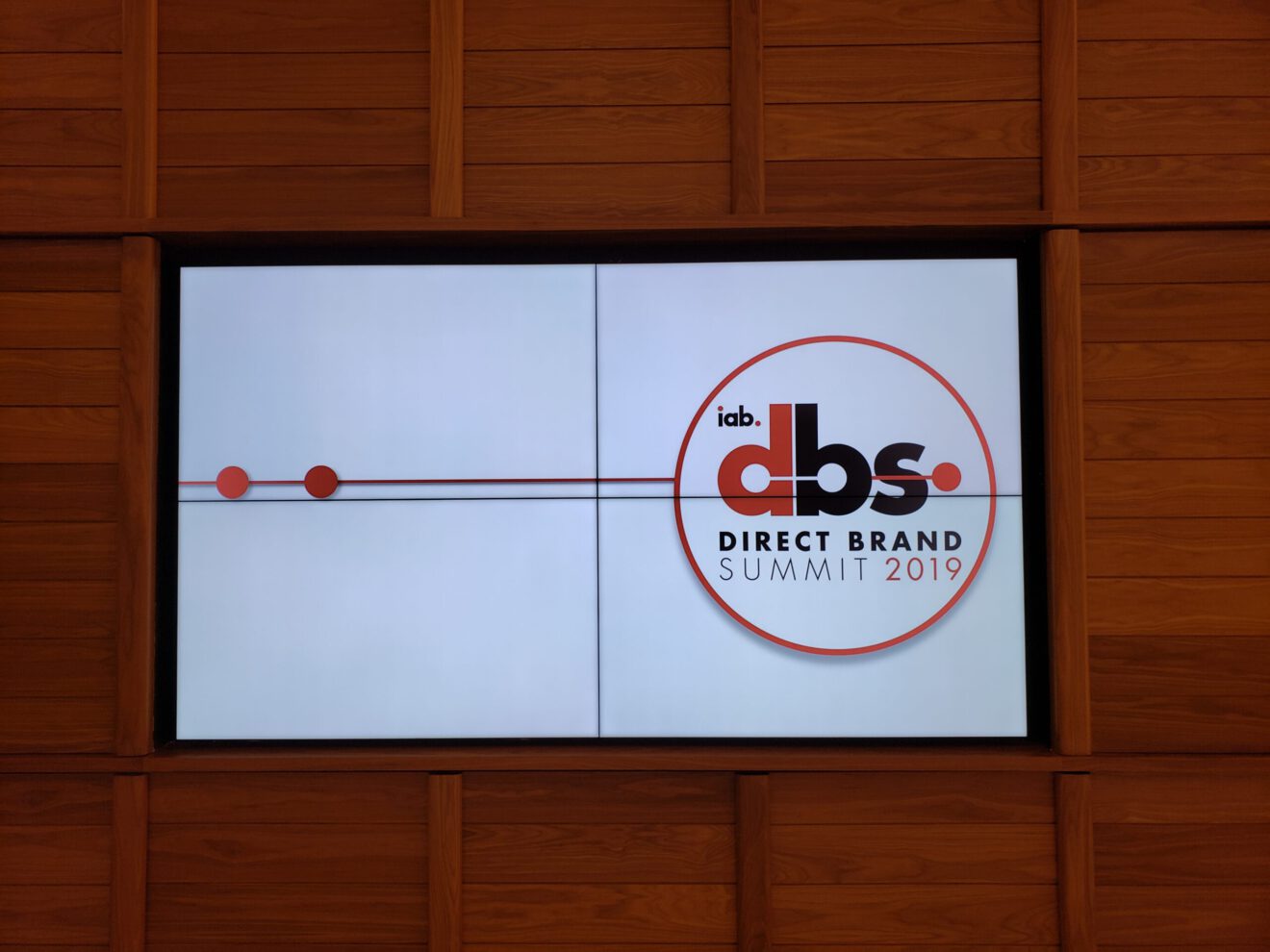The Interactive Advertising Bureau’s second annual Direct Brand Summit late last month was a meaty conference, chock full of insights. Even if you’re not in the direct-to-consumer ecosystem, the event offered wisdom into how retail is evolving, and the advantages of DTC and incumbent brands.
The conference also offered a mix of deep-dive and short, quick-hit discussions.
Below are insights and informational nuggets from three talks I sat in during my time at the event.
Courtney Bante, a global strategy executive at Pinterest, said there is opportunity for brands on the platform: “Ninety-seven percent of searches typed into the Pinterest search are unbranded,” adding that Pinners are open to trying new things.
She said people come to Pinterest primarily for one of three reasons:
- Every-day interests
- Seasonal moments
- Life events
She cautioned marketers looking to execute a Pinterest campaign to plan ahead.
“Pinners are planners,” she said, noting that the platform started seeing pins for Christmas as early as July.
The keys to good ads on Pinterest, she said are tied to three Cs:
- Context
- Content
- Craft
In detailing context, Bante said that it must play into the inspiration that Pinners are looking for when they come to Pinterest, which gives a look into their intent. With that intent, marketers should look at the main reasons (above) why users come to the platform and use their insight platform to determine where Pinners are in their purchase journey.
In detailing content, Bante said there are five attributes of content that inspire users:
- Visual appeal
- Novel
- Positive
- Attainable
- Active
“We generally see success when brands hit on two of the five,” she said.
In looking at the craft side of successful Pinterest ads, Bante said there are four guidelines marketers should follow to make an impact:
- The use of text as part of the visual (i.e., callouts)
- A call to action, whether that’s a hard or soft sell
- Show products in real-life situations
- Include a human touch
YouTube
“Everyone can be a superhero on YouTube,” Google’s Head of Industry, Direct to Consumer Retail Jodi Goldberg said. “That’s YouTube’s superpower.”
She said that 2 billion people use the platform every month and it reaches more 18-49 year-olds in a week than all of cable TV combined.
This gives marketers the “ability to connect with consumers in every state of mind,” later adding that 40% of users turn to the platform to learn more about a product before buying it.
She said the YouTube platform is designed to help brands achieve:
- Massive reach
- Brand and business goals simultaneously
- Offer diversity in the marketing mix
During her talk, Goldberg cited several case studies of YouTube marketers including one that combined YouTube video ads with paid Google Search, one marketer realized an 8% increase in search volume and 4% increase in call to action.
SRAX
Kristoffer Nelson is a founder and the chief operating officer of SRAX, a digital marketing and consumer data management and distribution technology platform. He spoke with IAB Senior Vice President of Research and Measurement Susan Hogan on “The Value of Privacy.”
Nelson’s primary point during his discussion with Hogan was that people will give up their data – but only if they receive something of value in exchange.
“Data is bad because consumers have become disassociated from it,” he said. “If you can put consumers back in data … you can create a better data set.”
In an SRAX survey with 53,000 respondents, 43,000 said they were “concerned” about privacy and the top three actions respondents took were changing their privacy settings, declining terms of agreement and removing a social app.
In that survey, when asked what could result from allowing cookies on your browser, 44% said identity theft was possible, followed by 37% cited credit fraud and 35% said their computer/laptop could receive a virus. (Respondents were allowed to select more than one choice.)
Nelson said, for brands to get access to data, the “value exchange needs to be made clear in any system you offer.”
While Nelson said DTC brands tend to have an advantage over incumbent brands because of the 1:1 relationship with consumers, offering value for data is one way incumbents can get closer to consumers.
Mike Driehorst is SmartBrief’s digital media editor, working on newsletters covering social media, advertising, agencies, interactive marketing, web design/development and multiculturalism.
Note: IAB is a SmartBrief partner and one of the newsletters Driehorst edits.
